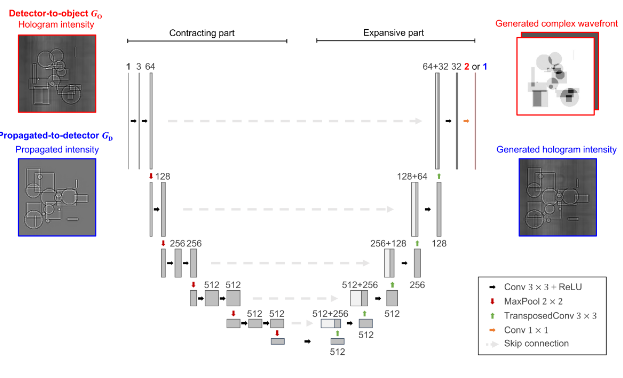Abstract
 |
Phase retrieval approaches based on DL provide a framework to obtain phase information from an intensity hologram or diffraction pattern in a robust manner and in real time. However, current DL architectures applied to the phase problem rely i) on paired datasets, i.e., they are only applicable when a satisfactory solution of the phase problem has been found, and ii) on the fact that most of them ignore the physics of the imaging process. Here, we present PhaseGAN, a new DL approach based on Generative Adversarial Networks, which allows the use of unpaired datasets and includes the physics of image formation. Performance of our approach is enhanced by including the image formation physics and provides phase reconstructions when conventional phase retrieval algorithms fail, such as ultra-fast experiments. Thus, PhaseGAN offers the opportunity to address the phase problem when no phase reconstructions are available, but good simulations of the object or data from other experiments are available, enabling us to obtain results not possible before. |
Yuhe Zhang et al., PhaseGAN: a deep-learning phase-retrieval approach for unpaired datasets, Opt. Express